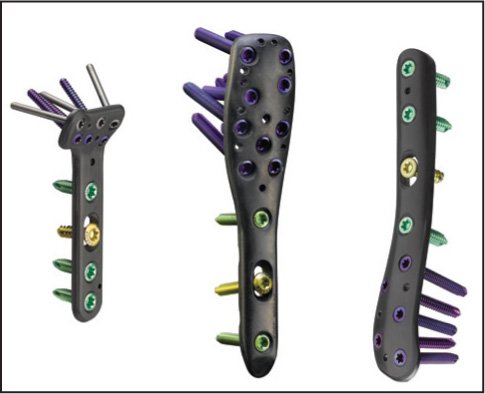
New Tech in Orthopaedic Trauma: Carbon Fiber:
For as long as I’ve done orthopaedic surgery, the implants (plates and nails) used to fix fractures have been made of metal.
This is so common that Orthopaedic Surgeons even joke that we “heal with steel”.
However, new technology out of Israel may disrupt this.
A range of plates and nails made not from steel but from an advanced carbon fiber material, is now available.
Just as new fuel-efficient airplanes (eg the Boeing 787 Dreamliner or the Airbus A350) are now made from carbon fiber rather than metal, carbon fiber offers a number of potential advantages in Orthopaedics:
- Carbon Fiber material is see-through (radiolucent) on x-ray. Often when a fracture has been fixed with steel implants, these implants block good visualisation of the fracture site on follow up x-rays. Use of see-through implants may enable orthopaedic surgeons to better monitor the progress of fracture healing.
- Carbon Fiber is an extremely lightweight material but is actually stronger than steel. Sometimes metal plates eventually fatigue and break. Carbon fiber implants are a lot stronger than steel (despite being much lighter) and in studies so far apparently none have broken.
- Carbon Fiber is an inert material. Although metal reactions are uncommon, they are not unheard of. Use of a even more inert material may, potentially, lead to a lower incidence of tissue reactions and need to remove the hardware.
- Carbon Fiber plates are less rigid than steel and allow micro movement of the bone, which may improve fracture healing. In order for a fracture to heal, a fracture site requires some tiny movement at the fracture site. This micro movement allows new bone stimulation to occur. It is well recognises that fixation which is too rigid can sometimes slow or prevent fracture healing. Carbon fiber plates may better mimic the mechanical properties of bone and better allow new bone to form.
These new carbon fiber implants are the same price as the steel implants and the cost is completely covered by private health insurance.
In 2017 Rafael Nadal plays tennis with a a carbon fiber tennis racquet, and not the “vintage” steel racquets used by the likes of Jimmy Connors in 1978.
I look forward to assessing whether these new carbon fiber implants out of Israel make a similar clinical difference in the management of orthopaedic trauma.
